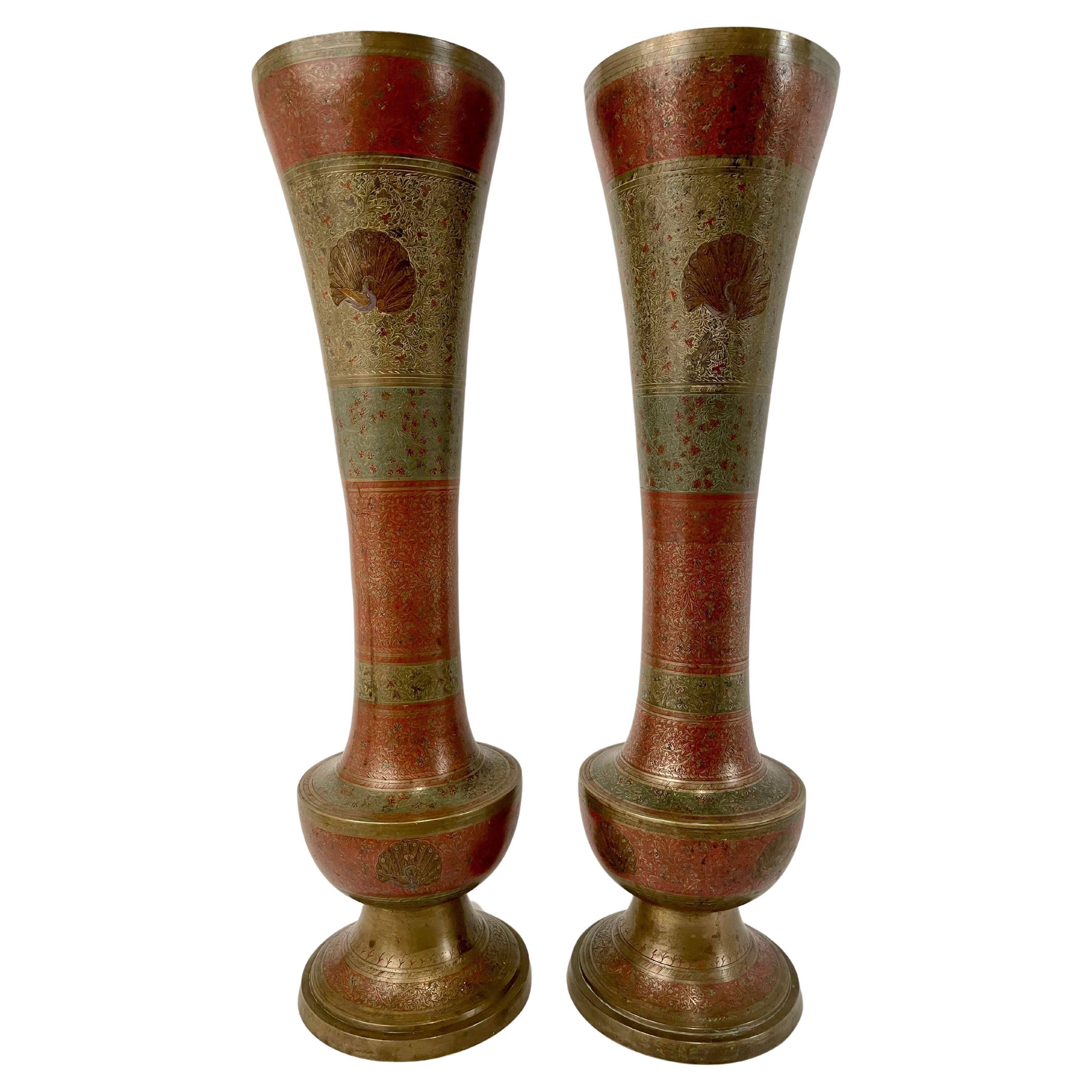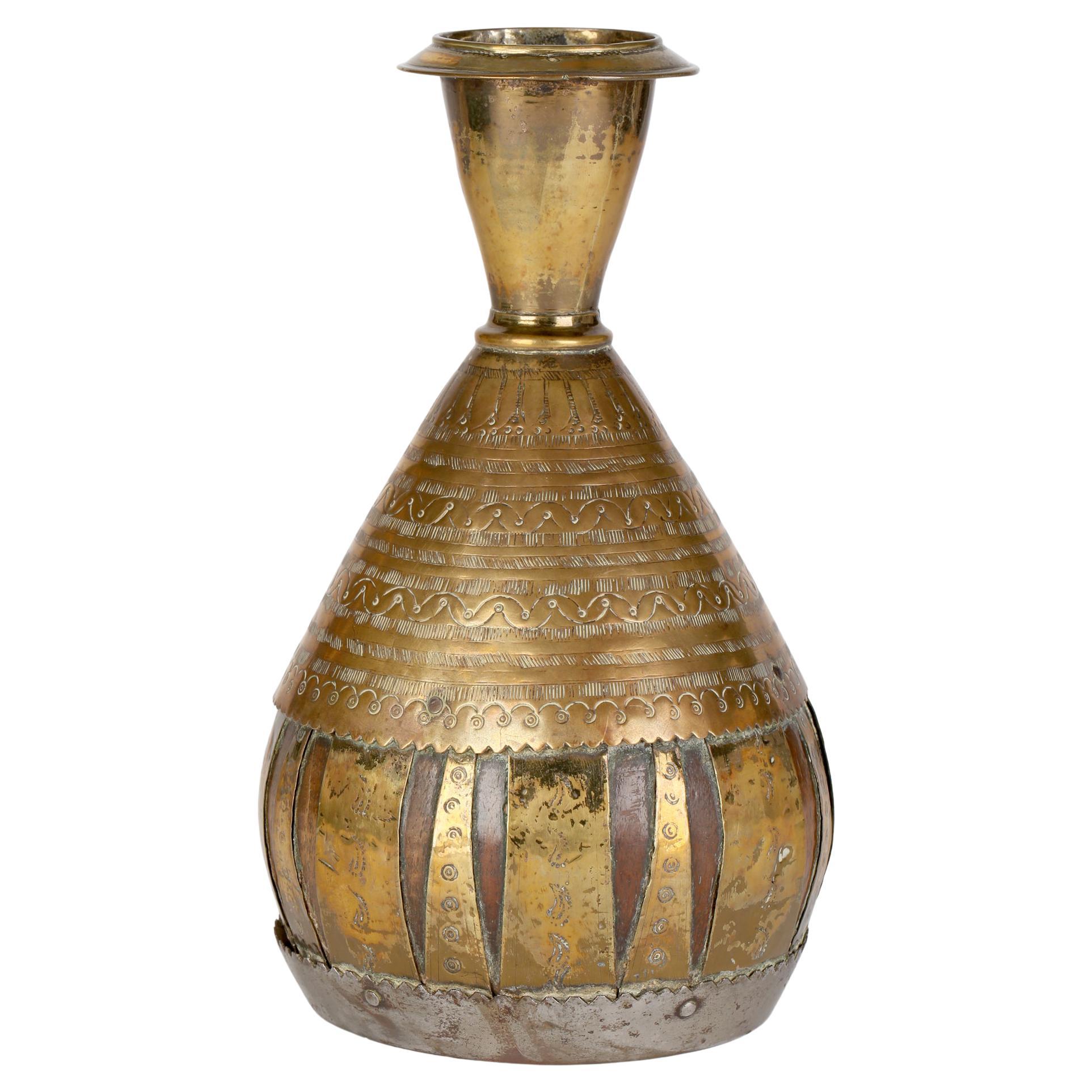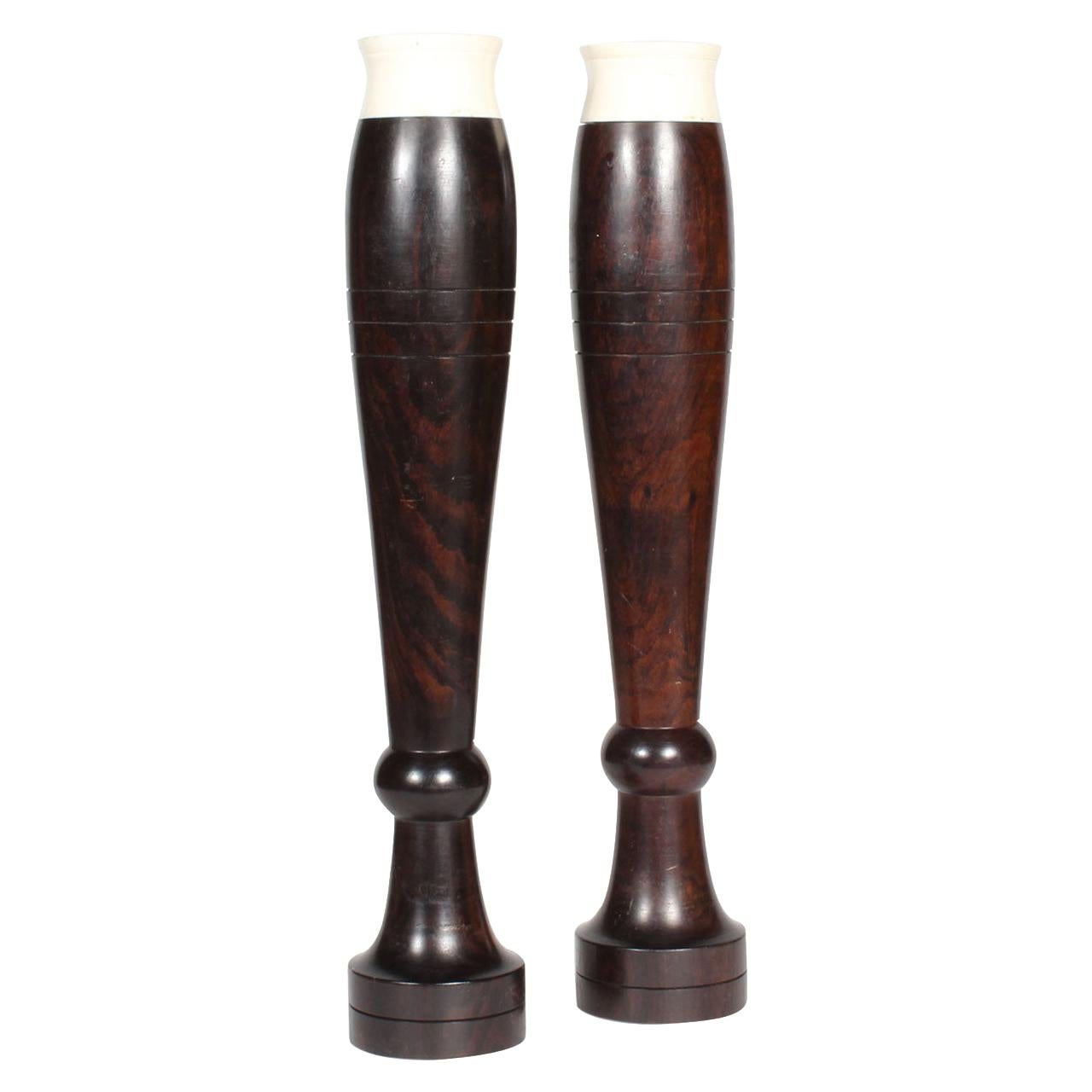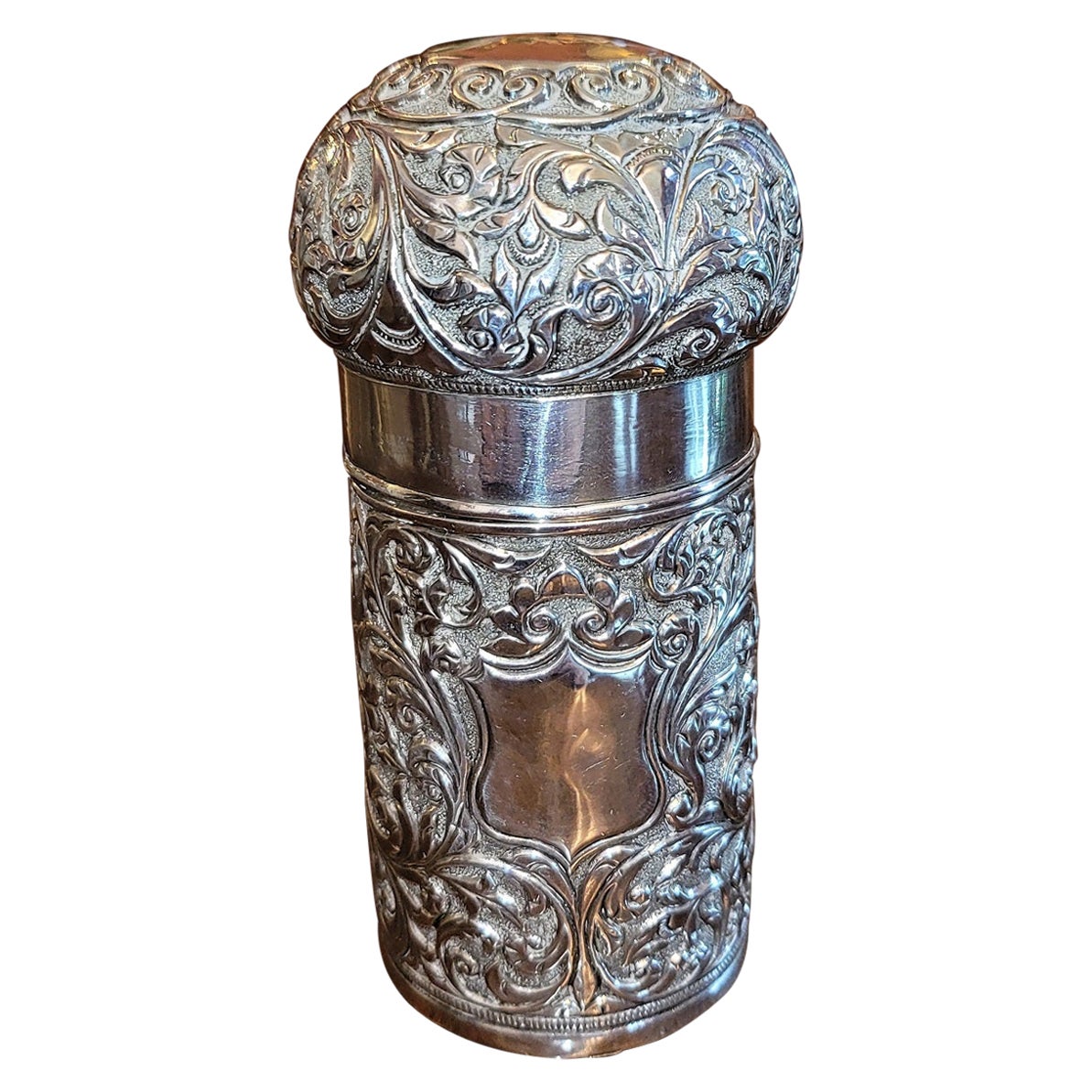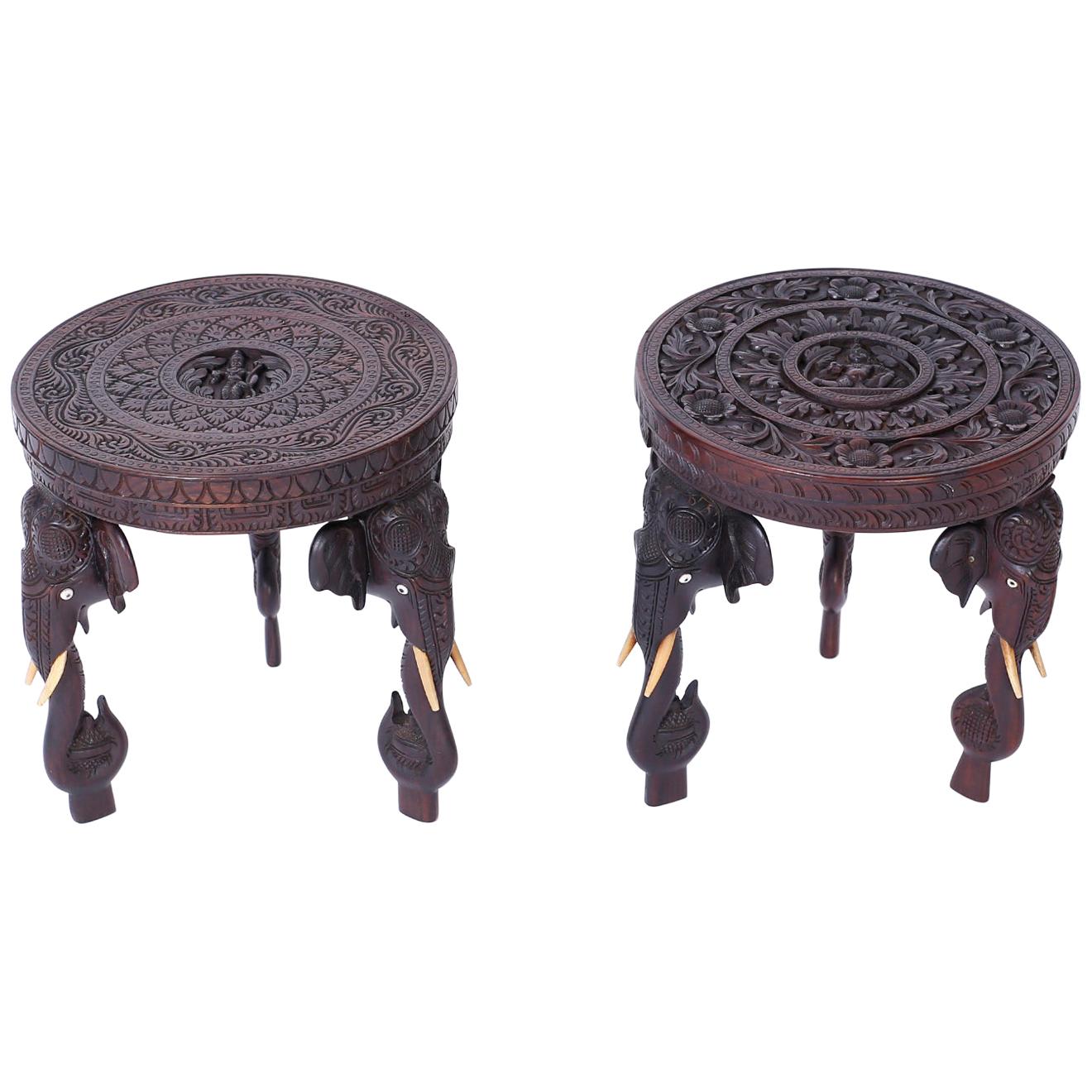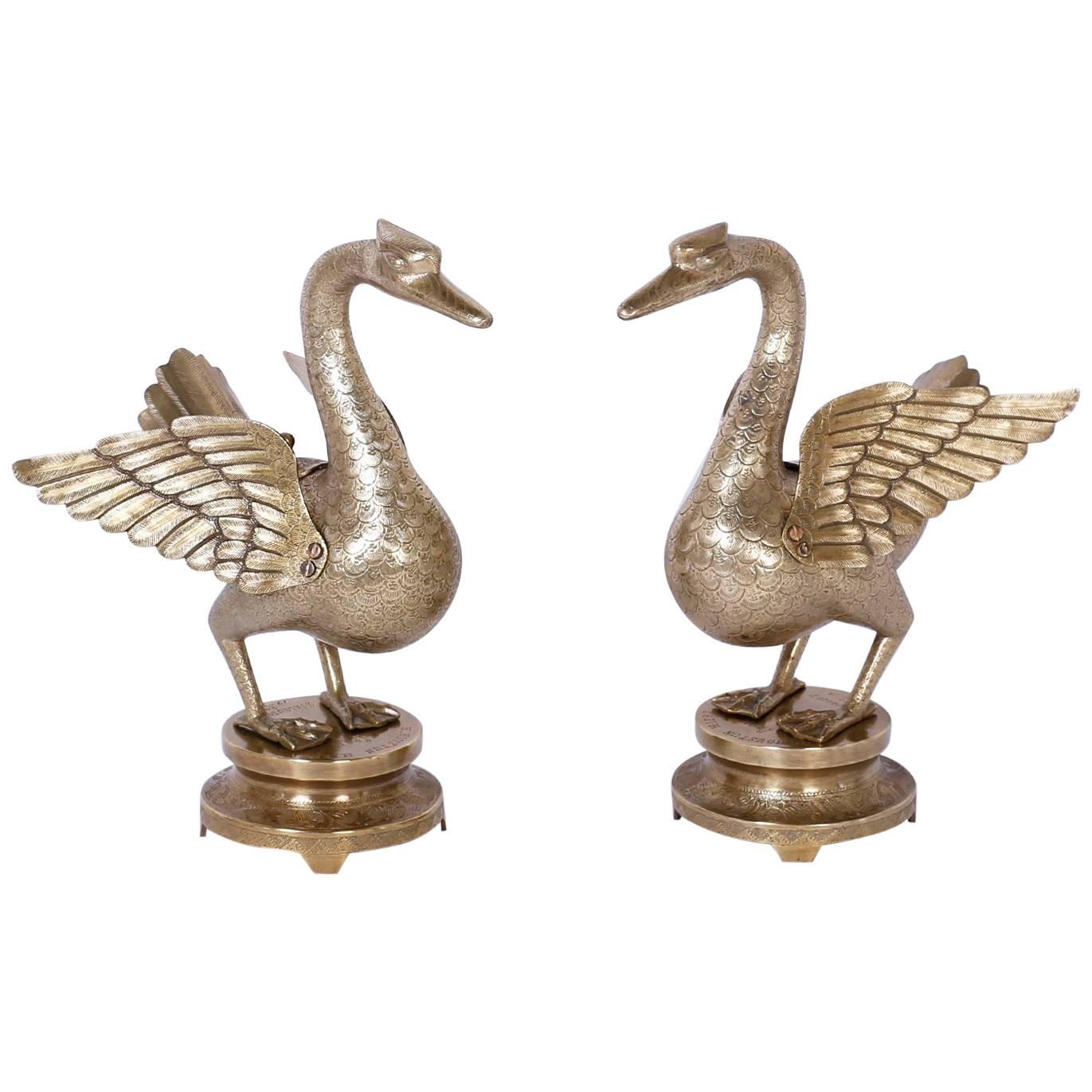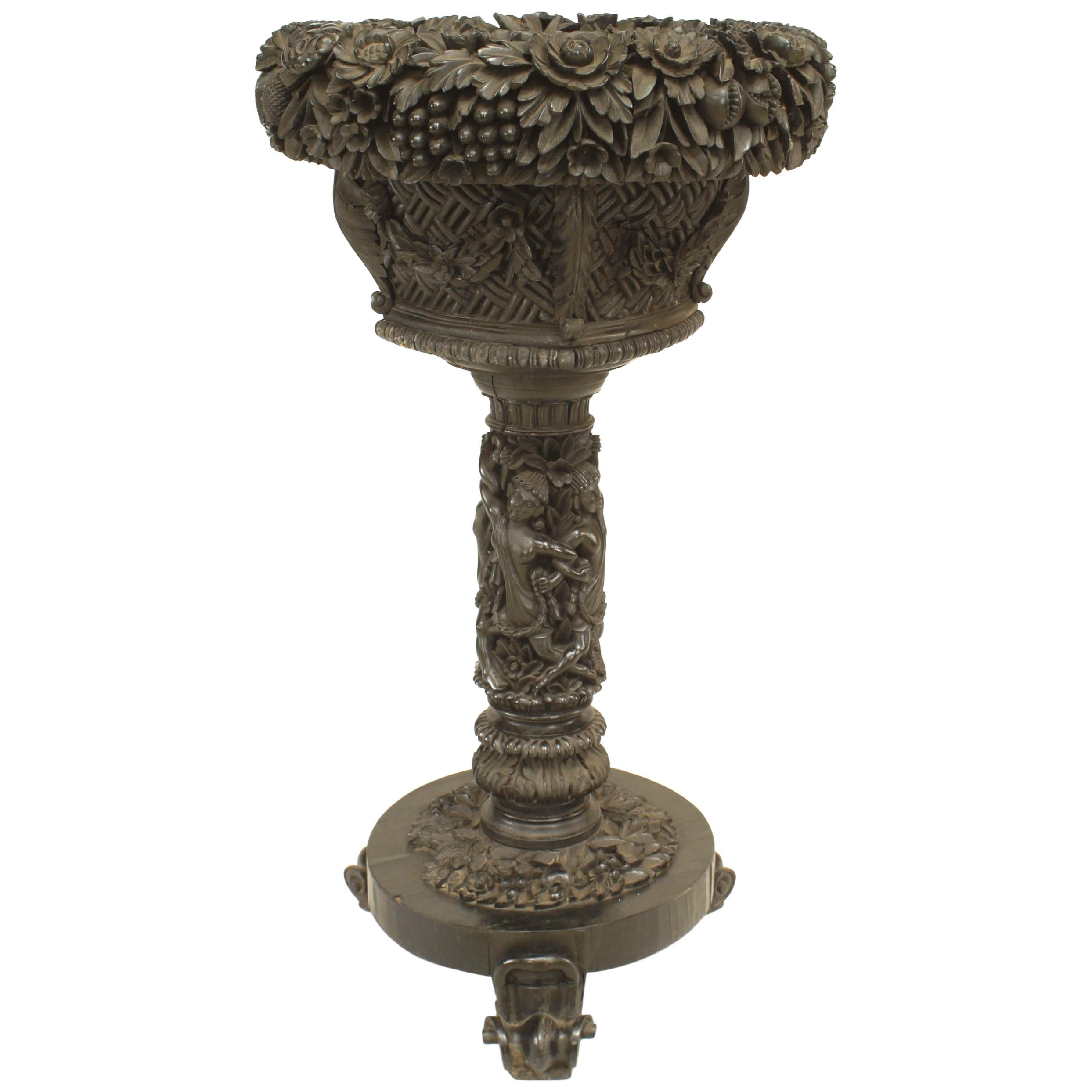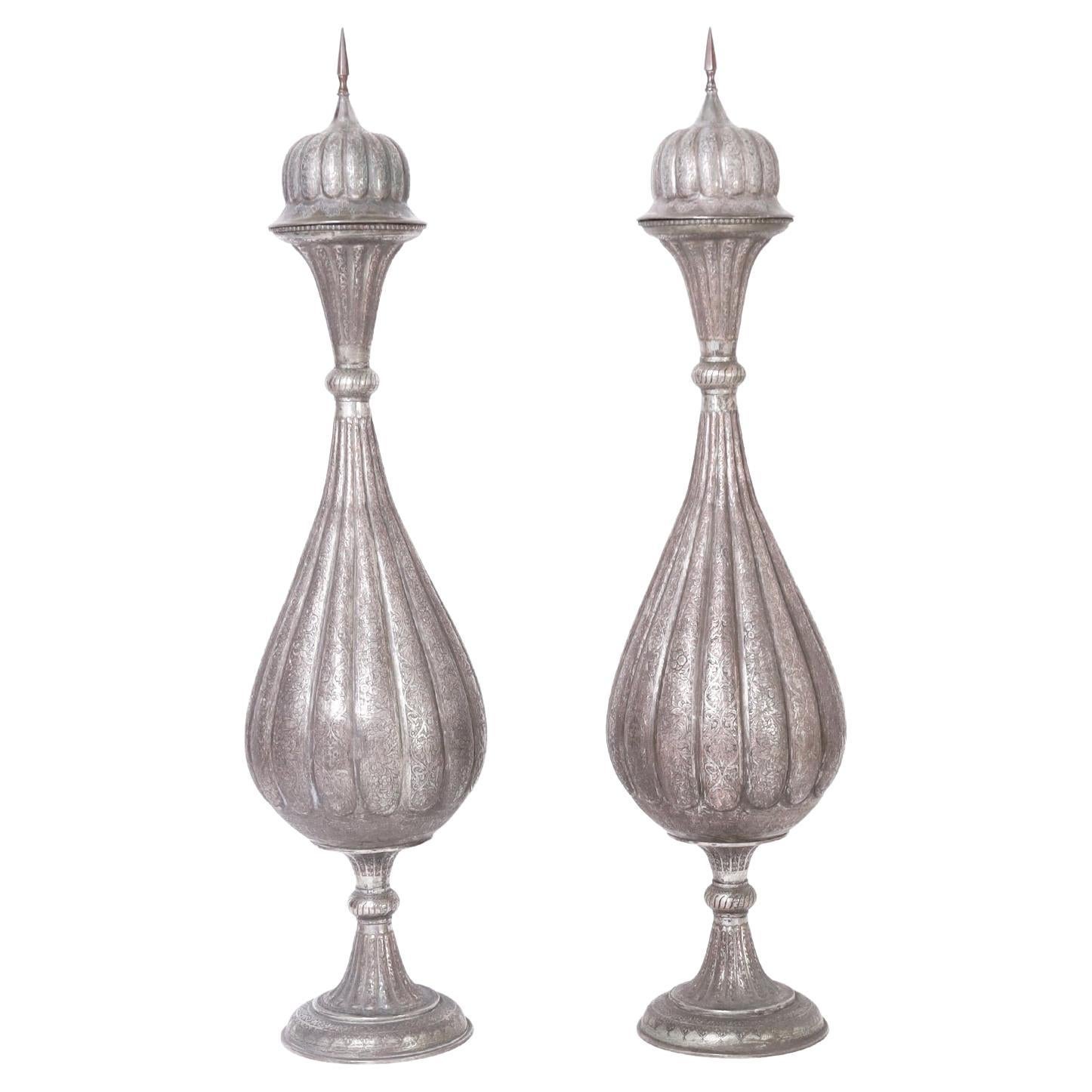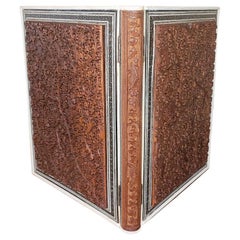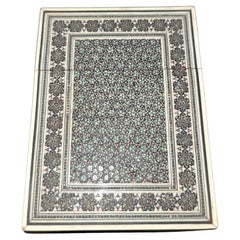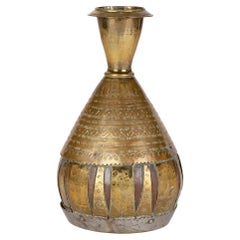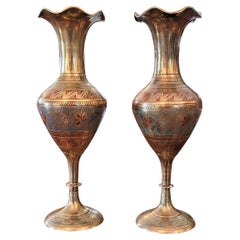
Pair of Anglo Indian Brass and Enameled Rose Vases
View Similar Items
Want more images or videos?
Request additional images or videos from the seller
1 of 11
Pair of Anglo Indian Brass and Enameled Rose Vases
About the Item
- Dimensions:Height: 7 in (17.78 cm)Diameter: 2.25 in (5.72 cm)
- Sold As:Set of 2
- Style:Anglo Raj (Of the Period)
- Materials and Techniques:
- Place of Origin:
- Period:
- Date of Manufacture:1900-1920
- Condition:Wear consistent with age and use. Very good original condition.
- Seller Location:Dallas, TX
- Reference Number:1stDibs: LU3978124940602
About the Seller
4.9
Platinum Seller
These expertly vetted sellers are 1stDibs' most experienced sellers and are rated highest by our customers.
Established in 2015
1stDibs seller since 2018
348 sales on 1stDibs
More From This SellerView All
- 19C Anglo Indian Silver Perfume Bottle CaseLocated in Dallas, TX19C Anglo Indian solid silver perfume bottle case. Lovely 19th century Anglo-Indian solid silver perfume bottle case with profuse repousse work. Not hallmarked because it was m...Category
Antique Late 19th Century Indian Anglo Raj Sterling Silver
MaterialsSterling Silver
- 19C Anglo Indian Highly Carved Padouk and Mosaic Folio CoverLocated in Dallas, TXPRESENTING A RARE AND DESIRABLE 19C Anglo Indian Highly Carved Padouk and Mosaic Folio Cover. This is a VERY RARE piece of Anglo-Indian and British Victorian Colonial history! ...Category
Antique Late 19th Century Indian Anglo Raj Decorative Boxes
MaterialsBone, Precious Stone, Sandalwood
- 19C Anglo Indian Sadeli Mosaic Greeting Card CaseLocated in Dallas, TXPresenting a superb 19C Anglo Indian Sadeli Mosaic greeting card case. Made in or around Bombay, India circa 1880. This is a greeting card case used for holding your greeting cards or business cards of the day ! The body of the case is made from sandalwood and it is fully overlaid with bone and highly intricate Sadeli Mosaic made up of thousands of micro mosaic pieces of bone, ebony, silver/pewter and semi precious stone. The workmanship is stupenduous !!!! This case is almost museum quality. One or two very, very minor losses of mosaic mainly where the top meets the body but otherwise near mint ! SADELI MOSAIC: “Anglo Indian boxes were made in India for the English residents from the early part of the 18th century. They were brought back or sent back to England usually by the people who had commissioned them. From the beginning of the nineteenth century they were imported more commercially, although not in any significant numbers until the middle decades. They were very highly valued, especially the early ones, to the extent that the designs were copied on late 19th and early 20th century tins. The ancient art of Sadeli Mosaic is said to have been introduced from Shiraz in Persia via Sind to Bombay, a long time before the Anglo Indian boxes were made. It was a technique, which required a high degree of skill and patience. It was executed very lavishly, in that the frequent cuts wasted a great amount of the precious materials used. The workmanship was however more than commensurable to the value of the materials. Ivory, silver, pewter (or other metals), wood and horn were cut into faceted rods which were bound together to form geometric patterns. When the glue has set, the rods were sliced in transverse sections. This gave the maker a number of angled circular pieces in the original pattern. Several variations of patterns could be achieved by combining the materials in different ways. The ivory was sometimes dyed green to give an extra color. The mosaic pieces in a combination of patterns, often separated by ivory, ebony, horn or silver stringing were used to veneer sandalwood boxes. In the early boxes, which date from the turn of the 18th to the 19th century, there are large panels of mosaic covering tops and sides of boxes. It took incredible skill to cover such large areas without any shakes or wavering of the pattern. The corners and joins on these boxes are impeccably matched. The makers (reputed to be Persian) of Sadeli mosaic made in the first two decades of the 19th century displayed a total understanding of the qualities of the different materials they used. They combined substances, which can expand and contract according to atmospheric conditions with others, which are hard and unyielding. The result was a sharp definition of the lines and patterns, which made up the whole design. On the early boxes the designs look deceptively simple. The fact is, they emerged from a culture, which had mastered geometry and understood how to generate a pattern from a set number of points. The patterns are so harmoniously combined that their incredible complexity is not immediately apparent. The earliest Sadeli boxes...Category
Antique Late 19th Century Indian Anglo Raj Decorative Boxes
MaterialsBone, Precious Stone, Ebony
- 19th Century Anglo-Indian Spice or Tea Caddy with Silver MountsLocated in Dallas, TXPRESENTING A GORGEOUS 19C Anglo Indian Rosewood Caddy with Silver Mounts. Really nice and unusual, 19th Century Anglo-Indian Spice or Tea Caddy, from cir...Category
Antique Late 19th Century Indian Anglo Raj Tea Caddies
MaterialsSterling Silver
- 19C Anglo Indian Vizigapatam Stamp BoxLocated in Dallas, TXPresenting an absolutely gorgeous and very rare 19C Anglo Indian Vizigapatam stamp box. Made in Colonial India (the Time of the Raj) circa 1860. Prob...Category
Antique Mid-19th Century Indian Anglo-Indian Decorative Boxes
MaterialsBone, Shell
- Rare Pair of Lladro Porcelain Mandarin VasesBy LladroLocated in Dallas, TXPRESENTING a FANTASTICALLY RARE Pair of Lladro Porcelain ‘Mandarin Vases’. Made circa 1973 and made in Spain by the exceptional maker, Lladro. These two vases were produced and sold individually and were titled “Mandarin Vase”. They were sculpted by Julio Fernandez...Category
Late 20th Century Spanish Mid-Century Modern Ceramics
MaterialsPorcelain
$3,000 / set
You May Also Like
- Pair Of Anglo-Indian Brass Urns With CobrasLocated in Houston, TXPair Of Anglo-Indian Brass Urns With Cobras. This great pair of incised brass urns with cobra handles date to the 1920's India. Unusual statement accessory.Category
Vintage 1920s Indian Anglo-Indian Urns
MaterialsBrass
$2,450 / set - Pair Anglo Indian Etched Colored Brass Vases with Peacocks, Large ScaleLocated in Stamford, CTImpressive and very cool large scale flute form brass vases with intricate etched designs covering the surface and peacock decoration. Colored in red and green in a manner similar to...Category
Antique Late 19th Century Indian Anglo-Indian Vases
MaterialsBrass
- Anglo Indian or Middle Eastern Brass Overlay Coconut Wood VaseLocated in Bishop's Stortford, HertfordshireA stytlish antique Indian or Middle Eastern coconut vase overlaid and mounted with brass dating from the 19th century. The vase has a coconut body with an inset turned wood base and ...Category
Antique 19th Century Indian Anglo-Indian Metalwork
MaterialsBrass
- Pair of Tall Anglo-Indian Vases in Turned Rosewood with Bone TopsLocated in Palm Beach, FLPair of tall and impressive Anglo-Indian turned rosewood vases with bone tops and incised circular ornamentation. Wonderful height with beautiful turni...Category
Early 20th Century Indian Anglo-Indian Collectibles and Curiosities
MaterialsRosewood
- Anglo-Raj Style Silvered Footed VaseBy RajhastaniLocated in North Hollywood, CAAnglo-Raj style silvered footed vase. Decorated with embossed floral pattern. Great to use as wine or champagne bucket cooler for a chic Bohe...Category
Late 20th Century Indian Anglo Raj Vases
MaterialsMetal
- Near Pair of Antique Anglo Indian Petite Stands with ElephantsLocated in Palm Beach, FLNear pair of Anglo-Indian stands crafted in mahogany with figural medallions in the center tops surrounded by elaborate floral designs over three elephant head legs with bone tusks.Category
20th Century Indian Anglo-Indian Garniture
MaterialsMahogany
Recently Viewed
View AllMore Ways To Browse
Long Neck
Antique In India
Indian Brass
Enamel Neck
Red Pair Of Vases
Red Pair Vases
Chased Brass
Antique Vases With Roses
Pair Brass Vases
Pair Of Brass Vases
Pair Of Vases 1900
Antique Brass Vessels
Antique Brass India
Antique India Brass
Mid Century Brass Vase
Ribbed Vases
Antique Indian Brass
Indian Antique Brass

